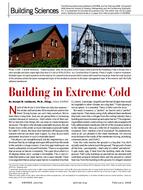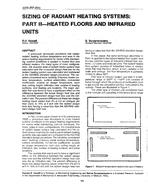Click here to purchase
Urban heat island (UHI) is a common problem marring urban cities around the world due to its impact on humans and the environment. The underlying challenge arises from the interplay of the contributing factors such as the building’s density, the surface albedo, the thermal energy storage capacity of the material, the green spaces, and the anthropogenic heat. This research aims to identify and assess urban vegetation scenarios to mitigate the UHI effect in a neighborhood in Beirut city, the capital of Lebanon. To this end, we employ the ENVI-met software V4.4 to predict the spatio-temporal distribution of the relevant thermodynamic variables and to compare the base case scenario with the urban vegetation scenario. Simulations, conducted on a summer day, are carried on a 200 x 200 x 46 m domain at a resolution of 2 meters, which allows the study of small-scale interfaces between individual buildings, surfaces, and vegetation. The model considers the physical environment such as trees and buildings, the surface characteristics such as roof and pavements, and the material and surface properties. These were selected based on a survey conducted in the chosen area. The model also accounts for solar radiation based on the date, time, geographic coordinates, and coverage of the cloud for the studied environment. The initial input for the software will be the air temperature, the wind speed, the wind direction, the relative humidity, in addition to the boundary condition. Assessment of the proposed mitigation strategy is based on comparing with the base case scenario the following four variables: air temperature, mean radiant temperature, physiological equivalent temperature (PET), and predicted mean vote (PMV).
Citation: 4th Intl Conf: Efficient Bldg Design
Product Details
- Published:
- 2020
- Number of Pages:
- 9
- Units of Measure:
- Dual
- File Size:
- 1 file , 1.5 MB
- Product Code(s):
- D-ICEB20-23


